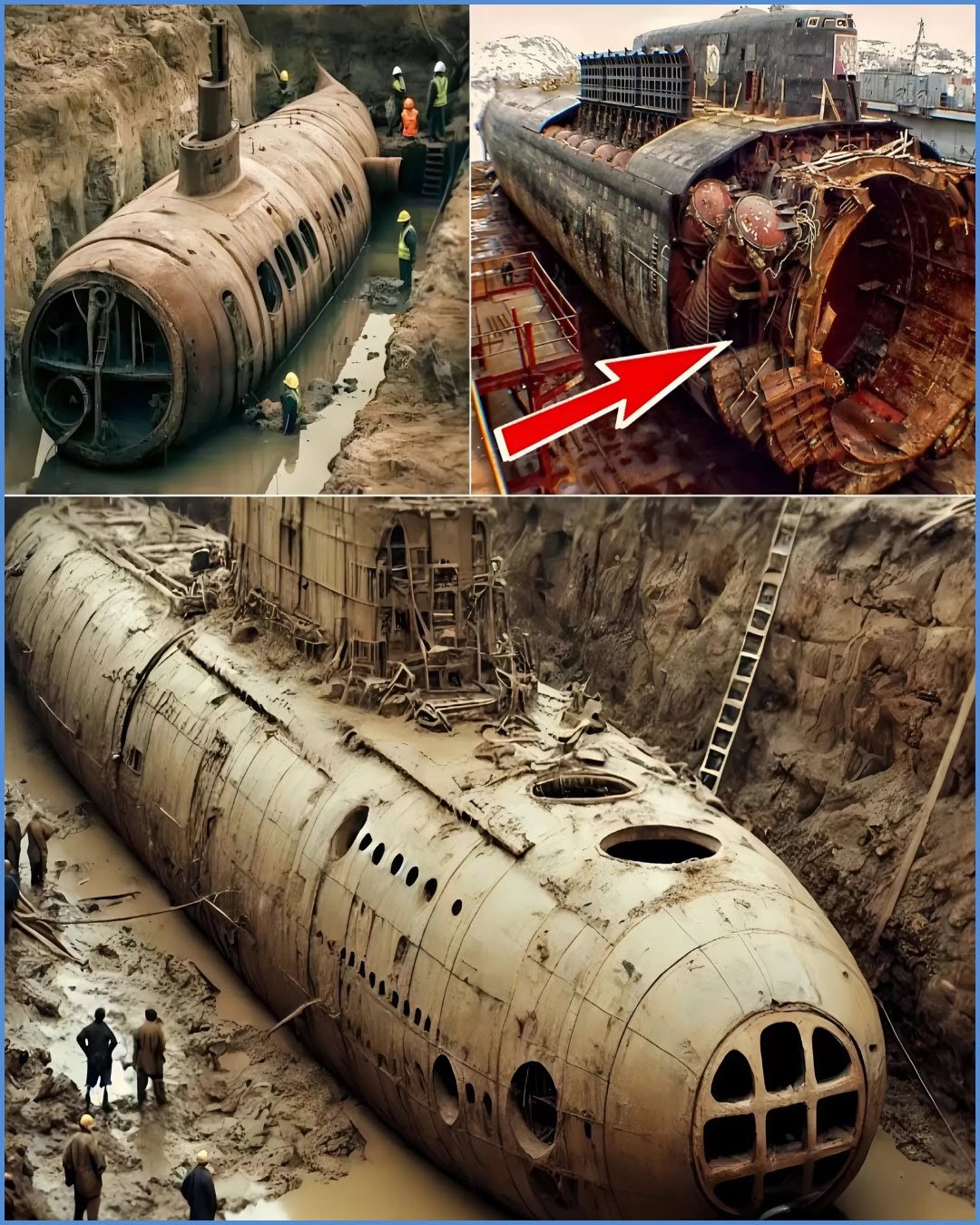Ancient Mystery Revealed: 3,000-Year-Old Submarine in Siberia

A groundbreaking discovery in Siberia has captured global attention: what appears to be a 3,000-year-old submarine buried deep beneath the frozen terrain. Preserved with remarkable detail, the find challenges conventional understandings of ancient engineering and suggests technological sophistication far beyond what historians previously attributed to civilizations of the era. Whether the artifact represents forgotten human innovation or something even more extraordinary, the discovery is prompting researchers to rethink humanity’s hidden past.
The Discovery

The submarine was uncovered during a remote archaeological survey in Siberia, under conditions that have preserved its sleek structure for millennia. Its design appears highly advanced, with a streamlined hull, reinforced structures, and internal compartments that hint at deliberate engineering. Researchers are carefully documenting each aspect of the artifact, from construction techniques and materials to possible propulsion mechanisms. The level of precision suggests a society—or intelligence—with a deep understanding of mechanics and hydrodynamics, far earlier than traditional historical timelines suggest.
While the find has yet to undergo peer-reviewed verification, preliminary imaging and analysis indicate that the structure is unlike any known ancient ship or vessel. Its preservation beneath ice has allowed scientists to observe details typically lost in conventional archaeological contexts, offering unprecedented insights into its design and purpose.
Theories and Speculation

The discovery has sparked a range of hypotheses. Some scholars propose that the submarine may be evidence of a forgotten civilization with advanced maritime technology, capable of constructing vessels far ahead of its time. Others entertain more controversial possibilities, suggesting that it could be an otherworldly artifact, perhaps even tied to extraterrestrial contact in antiquity.
Skeptics caution that unusual preservation or natural formations can sometimes be misinterpreted as man-made objects. Nevertheless, the structural consistency, apparent symmetry, and material composition suggest intentional construction rather than coincidence. Ongoing scientific studies, including radiocarbon dating, metallurgical analysis, and 3D imaging, aim to clarify the artifact’s origins and functionality.
Implications for History
If confirmed as human-made, the Siberian submarine could rewrite our understanding of ancient technology, demonstrating that early societies possessed engineering capabilities far beyond current assumptions. It may also prompt a reevaluation of trade networks, innovation diffusion, and the extent of ancient human knowledge in prehistory.
The discovery highlights the broader challenge of reconstructing early technological history: many artifacts may remain hidden, frozen, or buried, preserving secrets of civilizations that have long vanished. The submarine serves as a reminder that humanity’s story may be far richer and more complex than conventional narratives suggest.
Conclusion
The 3,000-year-old submarine found beneath Siberia’s ice is a remarkable enigma, bridging archaeology, engineering, and mystery. Its preserved form raises profound questions about the capabilities of ancient civilizations and the technologies they may have mastered. Whether human-made or otherwise, the find challenges assumptions, inspires curiosity, and underscores the enduring allure of unexplored frontiers in both history and science. As researchers continue their meticulous analysis, Siberia may yet reveal secrets that could forever alter our perception of humanity’s technological past.











